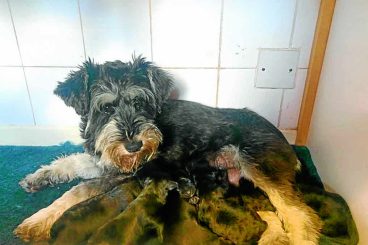A state-of-the-art digital-reconstruction of Robert the Bruce was this week unveiled – almost 700 years after his death.
Casts were made from what is believed to be his skull and the release of the images marks the end of a two-year research project, conducted by the University of Glasgow and Liverpool John Moores University.
One image depicts the subject in his prime, with a large and powerful male head that would have been supported by a muscular neck and stocky frame – a match for the super-athletes of today.
Researchers said: “This was a privileged individual who enjoyed the benefits of a first-class diet, and whose physique would have equipped him for the brutal demands of medieval warfare.”
Another image shows that, despite his healthy start, his skull featured likely signs of leprosy which disfigured the upper jaw and nose.
Historians believe the disease is possibly what killed him in 1329, aged around 55.
Project leader Dr Martin MacGregor, a senior lecturer in Scottish history at the University of Glasgow, was inspired by the discovery of the skeleton of King Richard III of England beneath a car park in Leicester in 2012.
He said: “The case of Richard III revealed how far the technology had advanced.
“I saw an opportunity to apply the technology to the Hunterian skull held here at Glasgow: first to test the credibility of its connection to Bruce, and then to try to add to our knowledge of Scotland’s greatest king.”
The Hunterian Museum, at Glasgow University’s, holds a cast made from a skull unearthed in 1818-19 at Bruce’s burial place, Dunfermline Abbey.
It was in Dumfries in February 1306 that Robert the Bruce stabbed the Red Comyn following a row over the throne.
Fearing he would be ex-communicated by the Pope, Bruce then gathered his supporters and made his claim for the kingdom. Six weeks later he was crowned at Scone Abbey.
Revealed: reconstruction of The Bruce’s face

THE face of Scotland’s most famous king - who had strong links to the region - has been recreated by historians.





















